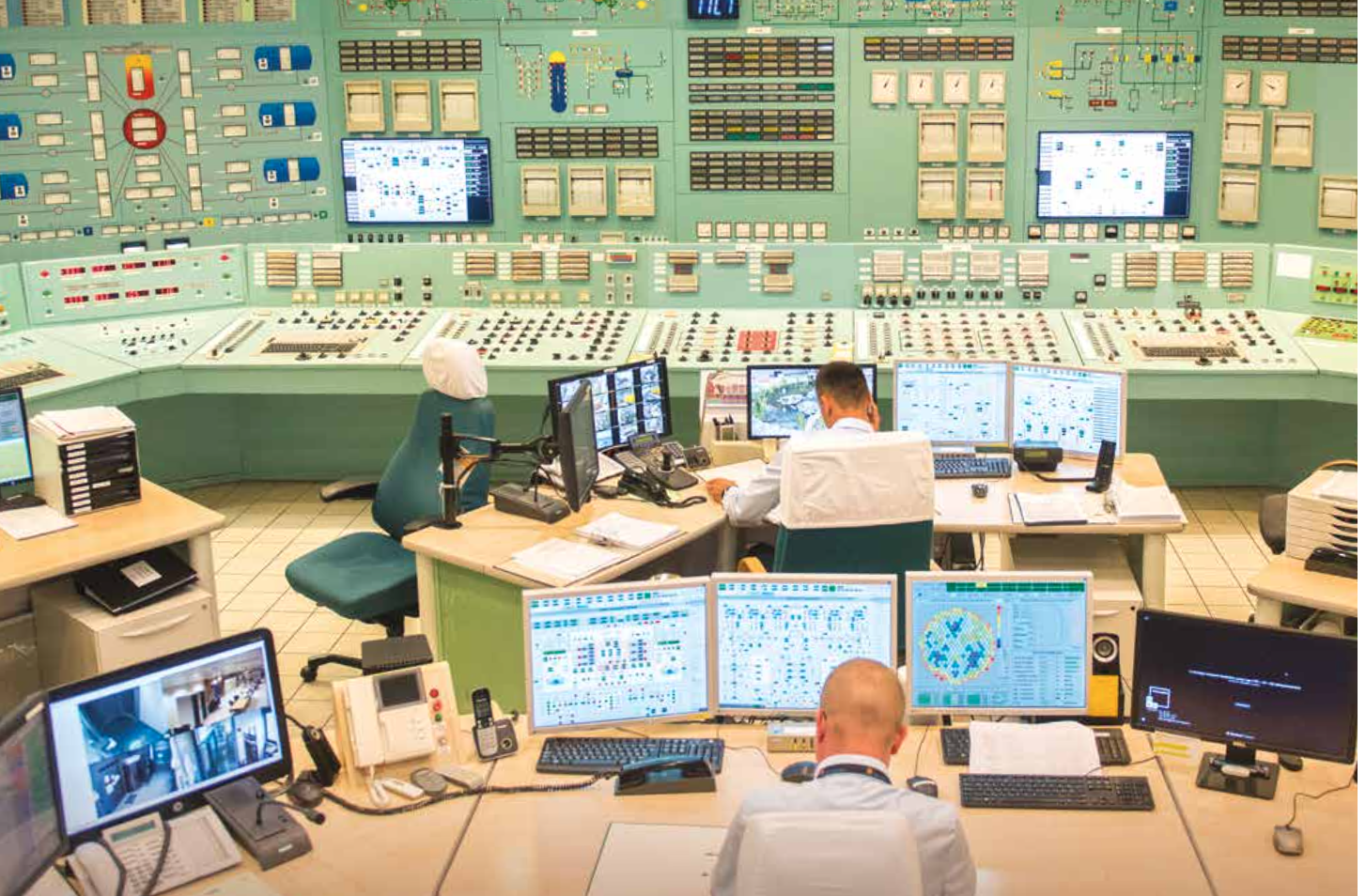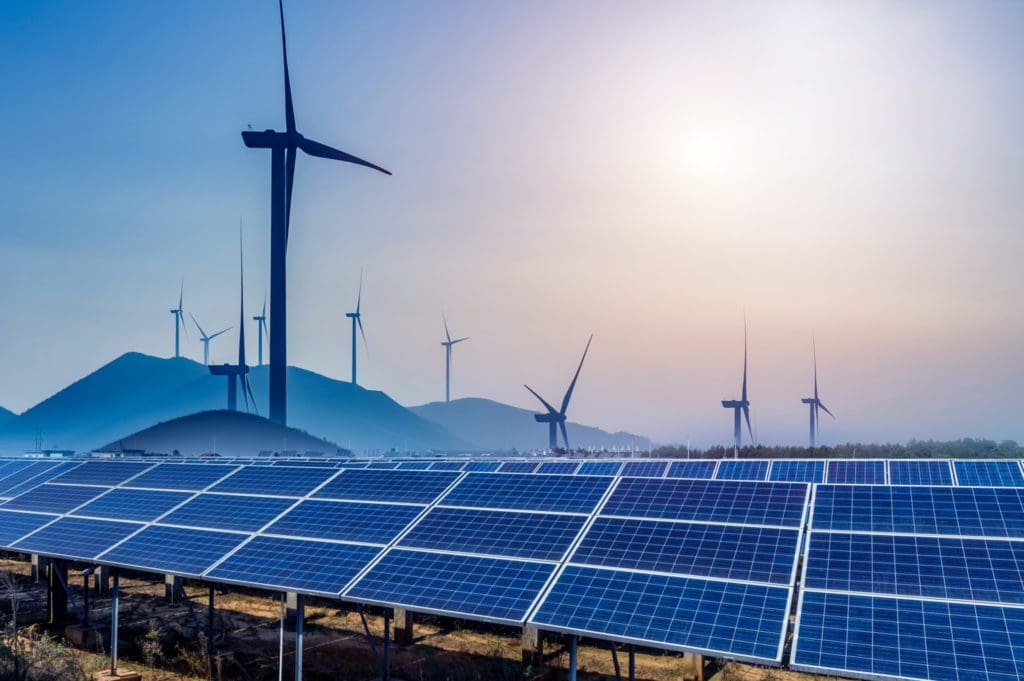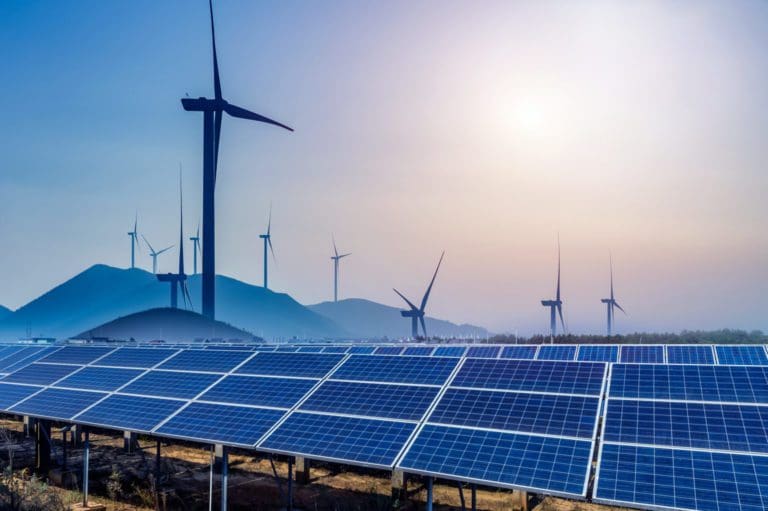Europe’s current energy crisis can be described as a symptom of our dependency on energy imports and the complete lack of energy self-sufficiency. In 2019, the EU’s energy import dependence rate was 61 per cent (compared to 56 per cent in 2000).1 This high import dependence makes the EU economy and key sectors vulnerable to large fluctuations in fossil fuel prices on global markets. Nuclear energy can be a useful asset to reduce this dependence. It is unrealistic to expect nuclear energy alone to provide the Union with full political and economic independence, yet it could prove vital in increasing our energy sovereignty and strategic autonomy.
Climate and energy policies have been formulated presenting attractive, even utopian, visions of climate protection measures and strategies, but many of these are economically and technologically unsound. Unwarranted greening, a lack of investment in the fossil-fuel industry, the overhasty abandonment of coal, a lack of long-term and fixed-price gas supply contracts, unfilled European gas storage facilities, fluctuating power generation due to weather-dependent renewable energy sources, energy system management problems, limited access to energy storage, the increased prices on carbon markets, and, last but not least, ideologically based discrimination against nuclear technology, have resulted in a six-fold increase in gas prices, a four-fold increase in electricity prices, a three-fold increase in Brent oil prices, and a five-fold increase in coal prices between spring 2020 and autumn 2021. This is the situation we are faced with now.
Higher energy bills for consumers have quickly become a political issue in Europe, with governments rolling out subsidies and tax breaks to soften the blow to household budgets. Higher inflation rates make it more expensive for people to buy everything from food to fuel and have been a factor holding back Europe’s recovery. Although we had an EU summit on 16 December 2021 where the energy crisis was discussed, decision-makers were unable to find effective solutions.2
The United Kingdom’s measures include a huge discount on electricity bills for all households from October 2022 and a £150 rebate on council tax bills for around 80 per cent of households in England from April. The government would also provide discretionary funding of 144 million pounds to help people on low incomes.3 The French government announced a social programme, under which half the population would receive €100 in ‘inflation compensation’, and €100 would also be allocated to students who are already taxpayers or scholarship holders, as well as to pensioners. In Spain, the government introduced a windfall tax on electricity generators and gas producers that are profiting from the record market highs, in order to help keep households’ energy bills low. It also implemented some serious measures to mitigate electricity price hikes, such as the reduction of VAT from 21 per cent to 10 per cent, and the reduction of electricity tax from 5.11 per cent to 0.5 per cent.4
Nation-level interventions may mitigate the current situation, but to avoid the next crisis we have to strengthen Europe’s energy sovereignty
Nation-level interventions may mitigate the current situation, but to avoid the next crisis we have to strengthen Europe’s energy sovereignty. There are three ways of doing this: we could invest in our existing fossil industry, but this would collide with European climate goals; we could enter into long-term energy supply contracts at fixed prices; or we could build an energy system with more emphasis on energy sources such as nuclear power, which would make the continent more self-sufficient. To understand the importance of nuclear energy, we must first discuss what the main problem with fossil fuels and renewables is, and why we need to change our overreliance on them. Since the problem with fossil fuels and renewables is strongly connected to the causes of the European energy crisis, they are best discussed together.
As György Matolcsy, governor of the Hungarian National Bank, puts it: ‘This energy crisis reflects both supply and demand, the lack of regulation and overregulation, the weakness of the EU and the structural problems of the energy sectors in some big member countries. Above all, this mini-crisis is due to the lack of alternatives and the weak competitiveness of the European economy. The US and Asia came out of the COVID-19 crisis far better than the EU, and the present energy crisis seems to be only a warning of the coming energy shocks of the 2020s.’5
As much as 57.5 per cent of primary energy consumed in 2020 was imported, and the main supplier was Russia.6 High import dependence makes the EU economy and key sectors vulnerable to large fluctuations in fossil fuel prices on global markets. At the same time, renewables, as sustainable as they are environmental, are unable to satisfy our energy needs 24/7. This is simply because they are not efficient enough when the sun is down or the wind is not blowing; besides, the question of how to store the energy produced in sunny, windy hours has not been solved. This issue, together with the fluctuation of fossil fuel prices worldwide, has turned the attention of Europe towards American liquefied natural gas (LNG) as an alternative.
Since the early 2000s, the aim of the EU’s gas policy has been the creation of a liberalized gas market to decrease dependence on Russian supply and pricing. To achieve this, the EU switched from long-term trading contracts to short-term traded markets, hoping that the American LNG surplus would result in competition between sellers, thus lowering prices. While Asia only purchases 35 per cent of its natural gas imports on short-term traded markets, Europe purchases 80 per cent this way. However, the LNG export-based surplus of supply ignores the fact that fracking shale gas differs from fracking other types of natural gas. The rest of the energy market is quite predictable: if prices go up, fracking rises too, and if prices go down, capacities are held back. Not so with shale gas.
The shale gas industry in the US has lost hundreds of billions of dollars in the last decade through selling its products at a lower price than the costs of fracking. Deloitte claims companies in the shale gas industry (both research and production) lost $300 billion,7 while Business Insider estimates this figure to be $500 billion.8 The nearly infinite resources invested in the shale gas industry are wasted, as fracking prices have stayed high against all expectations. Supplies increased, which lowered prices, and prices cannot cover fracking expenses in the shale gas industry. Today’s energy crisis—and some market analysts expect today’s high prices to remain until 2025—may hide the unprofitability of this production, and it could seem to be a good idea to invest in this industry for a few years, but in reality, LNG is not a viable alternative to cheap Russian and Middle Eastern gas.
If we consider fluctuations in fossil fuel prices, the regular unavailability of renewables, and the long-term unfeasibility of LNG, the need to find alternatives to increase our autonomy seems clear. An under-planned green turn should be avoided as well, as the energy sector could easily collapse if it relies on weather-dependent renewables. The current energy crisis proves that if we are not careful, the results could be extremely high prices and rising carbon emissions. A well-planned energy policy can be characterized by the following: security of supply, affordability, and coordinated transition to green energy.
Supporting the construction of nuclear power plants across Europe will make a significant contribution to greening the energy sector and an energy policy based on ideological and business interests is a flawed strategy
Contrary to anti-nuclear propaganda, nuclear energy does not endanger countries, but rather serves as a green solution. It has the potential to reduce greenhouse gas emissions because it does not emit any during its operation, while it has about the same lifetime carbon dioxide emissions per unit of electricity production as wind energy, and one third of the solar energy.10 Supporting the construction of nuclear power plants across Europe will make a significant contribution to greening the energy sector and an energy policy based on ideological and business interests is a flawed strategy. There are several aspects that need to be considered in order to decide which technologies are optimal in the fight against climate change, but we must take local conditions into account. We need to take professionally valid measures to reduce our GHG emissions, otherwise the EU will not be a climate hero at all in 2050.
Nuclear energy has been labelled as ‘green’ in the European Commission’s proposal for Green Taxonomy Regulation, which helps to maintain and develop nuclear capabilities with financial resources. The European Parliament and Council have four months to examine and sign a proposal or raise an objection. Both institutions may request an additional two months of investigation. The Council has the right to object to it by a reversed qualified majority, meaning that at least 72 per cent of member states (at least 20 of them), representing at least 65 per cent of the EU population, must object to a delegated act and a majority of the European Parliament can object (with at least 353 members).9
Nuclear power plants are less sensitive to changes in fuel prices, but they are currently able to satisfy energy needs relatively cheaply, continuously, and in large quantities as a single energy source, ensuring at the same time the security of energy supply and national energy sovereignty. Industrially scaled technologies to offset fluctuations in weather-dependent power generation without carbon or to store overplus power do not exist yet. This is the main reason why we cannot supply our energy needs with purely renewable energy.
Nuclear energy is demonized in some countries, and yet in most of the world, we are experiencing a renaissance in nuclear power. Nuclear power plants under construction in 2021 include fourteen in China, six in India, four in South Korea, three in the UAE, Turkey, and Russia, and two in Japan, the UK, Bangladesh, Ukraine, the US, and Slovakia.11 The case of Japan is especially intriguing. Following the disaster of Fukushima in 2011, the country’s otherwise perfectly operable reactors were halted. Ten reactors had been put back into operation by 2021, with fifteen more in progress. This is very significant, as the country’s electricity power generation used to be 30 per cent nuclear. This had dropped to 5.1 per cent by 2020.12 ‘Reviving’ nuclear power plants will hopefully lower energy prices in Japan, where consumers currently pay a high energy price: prices are among the top 20 worldwide.13
Eight EU member states had higher energy prices than Japan in December 2021. Six of these produced no nuclear power or were in the progress of phasing it out: Germany and Denmark had the second and third highest prices globally, while nuclear-free countries like Ireland, Cyprus, Portugal (with a 1-MW- capacity reactor for research purposes), and Italy were also part of this ‘lead pack’.14
The current energy crisis is affecting Europe on more levels than one can imagine. Our current situation of dependence calls for alternatives in our energy policy. We depend on gas imports with quickly changing prices and a strong Russian influence. We depend on renewables that cannot provide energy security in their current form. We are trying to decrease this dependence by turning to American LNG that cannot work in the long term. All this considered, recourse to nuclear energy seems inevitable.
Nuclear reactors can provide cheap, green energy that is available 24/7 and reduce our dependence on Russia, the weather, and the American LNG industry. It would be bold to assume that it is the ultimate solution for our economic and political issues, but it is able to strengthen our autonomy.
NOTES
1 European Commission, ‘Shedding Light on Energy in the EU: A Guided Tour of Energy Statistics’, Eurostat (2021), doi: 10.2785/551213, https://ec.europa.eu/ eurostat/cache/infographs/energy/img/pdf/shedding- light-in-the-EU-2021_en.pdf?lang=en, accessed 21 February 2022.
2 European Council, ‘European Council Meeting (16 December 2021) – Conclusions’, EUCO 22/21 (2021), www.consilium.europa.eu/media/53575/20211216-euco-conclusions-en.pdf, accessed 21 February 2022.
3 HM Treasury, ‘Millions to Receive £350 Boost to Help with Rising Energy Costs’, GOV.UK (2022), www.gov.uk/government/news/millions-to-receive- 350-boost-to-help-with-rising-energy-costs, accessed 21 February 2022.
4 Raphael Minder, ‘Spain Moves to Reduce Rising Electric Bills’, The New York Times (14 September 2021), www.nytimes.com/2021/09/14/business/spain-rising-electric-bills.html, accessed 21 February 2022.
5 György Matolcsy, ‘Rocketing Energy Prices Are the Harbinger of the Future’, Re ‘What Is behind Rocketing Natural-gas Prices? (2021), www.mnb.hu/en/pressroom/publications-of-the-governor/2021/matolcsy-rocketing-energy-prices-are-the-harbinger-of-the-future, accessed 21 February 2022.
6 European Commission, ‘EU’s Energy Import Dependency Decreased in 2020’, Eurostat (9 February 2022), https://ec.europa.eu/eurostat/web/products-eurostat-news/-/edn-20220209-1.
7 Deloitte, ‘The Great Compression: Implications of COVID-19 for the US Shale Industry’ (2020).
8 Benji Jones, ‘“$500 Billion in Capital Destroyed”: How the US Shale Industry Vaporized Money even before the Pandemic Struck – And Why the Market Meltdown Is Only Hastening Its Decline, According to a Top Investor’, Business Insider (May 2020), www.businessinsider.com/us-shale-oil-industry-vaporized-money-before-energy-markets-collapsed-2020-5, accessed 21 February 2022.
9 European Commission, ‘EU Taxonomy: Commission Begins Expert Consultations on Complementary Delegated Act Covering Certain Nuclear and Gas Activities’, Press Corner (2022), https://ec.europa.eu/commission/presscorner/detail/en/IP_22_2, accessed 21 February 2022.
10 Richard P. Allan et al., ‘AR6 Climate Change 2021: The Physical Science Basis’, IPCC AR6 WGI (2021), www.ipcc.ch/report/ar6/wg1/#FullReport, accessed 21 February 2022.
11 IAEA, ‘Under Construction Reactors’, Reactor Status Reports (2022), https:// pris.iaea.org/PRIS/WorldStatistics/ UnderConstructionReactorsByCountry.aspx, accessed 21 February 2022.
12 World Nuclear Association, ‘Nuclear Power in the World Today’, Current and Future Generation (2022), https://world-nuclear.org/information- library/current-and-future-generation/nuclear-power-in-the-world-today.aspx?fbclid=IwAR1D0mj- dTYMlR7TcvtIAOBVvePZOdlFU_ w3cCtqkihAJKzrihK8MKuMpWU, accessed 21 February 2022.
13 ‘Electricity Prices for Households’, Global Petrol Prices (2021), www.globalpetrolprices.com/Japan/electricity_prices/, accessed 21 February 2022.
14 ‘Electricity Prices for Households.’







